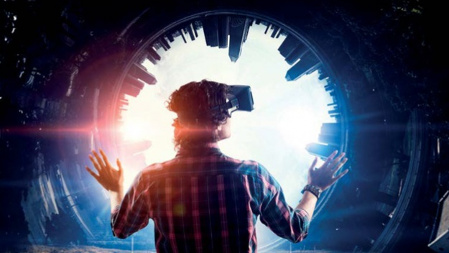360 Video Requires 360 Storage
LONDON—The growing medium of virtual reality requires a rethink of how to view storage. VFX houses are paving the way, says Dave Frederick, senior director of media & entertainment at Quantum.

Virtual reality 360-degree video is creating new film, television and gaming experiences that enable audiences to control where their attention is focused. The ability to interact with the content environment is arguably the most significant change in the audience viewing experience since the advent of cinema itself.
Changing a 100-year-old paradigm is not without technical challenges, however. Among the first responders to answer the call are visual effects artists. With a strong skill set in compositing, an understanding of 2D and 3D space, and a flare for the dynamic, VFX artists operate on the front lines of VR post production. The challenges inherent to VR—including camera stitching, rig removal and panoramic image manipulation—require many of the same skills.
Because VR 360-degree is a new medium, production budgets often are limited. It’s not unusual for VFX artists to be called upon to create compelling visuals to fill the void. Skilled artists can create a posse of 20 cowboys in a scene when a live production budget might support only three. A realistic ocean backdrop can be added to ship-board scenes without requiring a drop of water.
HIGH DEMANDS
To create images that surround the audience, images from multiple cameras are stitched together into a large panoramic image—the equivalent of 6K or 8K resolution. For content targeting high-end head-mounted displays with 3D stereoscopic playback, finishing resolutions can be even higher.
High-performance scale-out storage is therefore an essential element of the VR post-production workflow. It’s critical that storage be fast enough to support large file sizes and also meet the performance requirements of editing and color grading VR 360-degree, which often differ from the demands of VFX and animation. Editing and grading require storage arrays that provide unblinking sequential playback of ordered frames on disk. Visual effects and animation can require both sequential and random performance.
Fibre Channel storage area networks (SANs) are favored for sequential playback of large frames and files because they deliver deterministic, guaranteed bandwidth to each connected workstation.
For animation work, file reads and writes are smaller but occur randomly, and come from a greater number of connected workstations. Random storage performance is most economical using an IP-based network attached storage (NAS) system. The “best effort” nature of IP protocols matches well with the iterative nature of animation, which does not typically require sequential playback of large files.
UNFIFIED APPROACH
In practice, maintaining two different storage systems can be expensive and lead to costly duplication of large files. This is why some post facilities are turning to unified storage that combines technology from both SAN and NAS. By supporting both IP and fibre channel connections to the same shared storage infrastructure, a unified SAN-NAS approach allows post facilities to avoid the time-consuming network-based transfer of files between workflow stages. It both minimizes down time and gives artists more time to create.
The random performance required for animation work can be further enhanced by solid state drives (SSDs), which use flash memory instead of spinning disk. Elimination of the time needed for drive heads to find file bits means that SSDs can perform anywhere from 10 to 100 faster than hard disk drives (HDDs).
All-flash arrays offer exceptional performance, but they can be expensive. A more affordable option is a hybrid array: a combination of SSDs and HDDs. Intelligence in the array controllers monitor the most readily used files and keep them in the flash storage portion of the array. If files are not used in a given time period, they are demoted to the more economical HDDs in the array.
BRIDGING THE EDITORIAL DIVIDE
The efficiency gains from a unified SAN-NAS storage solution provide a big boost to VR 360-degree post workflows. Artists are happier and more productive because the creative software they use responds fast. They are better able to create engaging content on time and on budget. Facilities that take advantage of this creative approach can start with a small unified storage configuration and then increase performance and capacity as needed. With such a flexible, powerful storage solution, VR content production companies can fulfill their viewers’ wildest visual dreams today—and are prepared to take viewers even further in the future.
This story first appeared on TVT's sister publication TV Tech Global.
Get the TV Tech Newsletter
The professional video industry's #1 source for news, trends and product and tech information. Sign up below.
